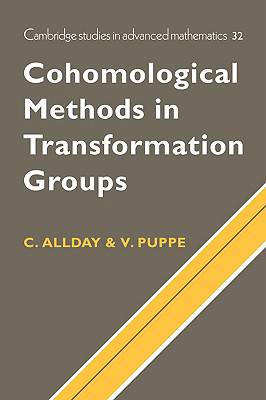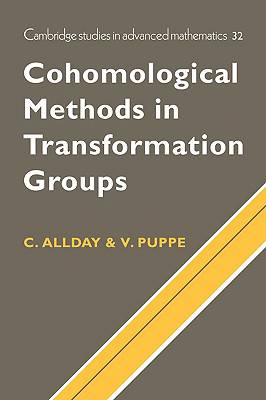
- Afhalen na 1 uur in een winkel met voorraad
- Gratis thuislevering in België vanaf € 30
- Ruim aanbod met 7 miljoen producten
- Afhalen na 1 uur in een winkel met voorraad
- Gratis thuislevering in België vanaf € 30
- Ruim aanbod met 7 miljoen producten
Zoeken
€ 275,45
+ 550 punten
Uitvoering
Omschrijving
In the large and thriving field of compact transformation groups an important role has long been played by cohomological methods. This book aims to give a contemporary account of such methods, in particular the applications of ordinary cohomology theory and rational homotopy theory with principal emphasis on actions of tori and elementary abelian p-groups on finite-dimensional spaces. For example, spectral sequences are not used in Chapter 1, where the approach is by means of cochain complexes; and much of the basic theory of cochain complexes needed for this chapter is outlined in an appendix. For simplicity, emphasis is put on G-CW-complexes; the refinements needed to treat more general finite-dimensional (or finitistic) G-spaces are often discussed separately. Subsequent chapters give systematic treatments of the Localization Theorem, applications of rational homotopy theory, equivariant Tate cohomology and actions on Poincaré duality spaces. Many shorter and more specialized topics are included also. Chapter 2 contains a summary of the main definitions and results from Sullivan's version of rational homotopy theory which are used in the book.
Specificaties
Betrokkenen
- Auteur(s):
- Uitgeverij:
Inhoud
- Aantal bladzijden:
- 484
- Taal:
- Engels
- Reeks:
- Reeksnummer:
- nr. 32
Eigenschappen
- Productcode (EAN):
- 9780521350228
- Verschijningsdatum:
- 1/07/1993
- Uitvoering:
- Hardcover
- Formaat:
- Genaaid
- Afmetingen:
- 152 mm x 229 mm
- Gewicht:
- 875 g

Alleen bij Standaard Boekhandel
+ 550 punten op je klantenkaart van Standaard Boekhandel
Beoordelingen
We publiceren alleen reviews die voldoen aan de voorwaarden voor reviews. Bekijk onze voorwaarden voor reviews.








